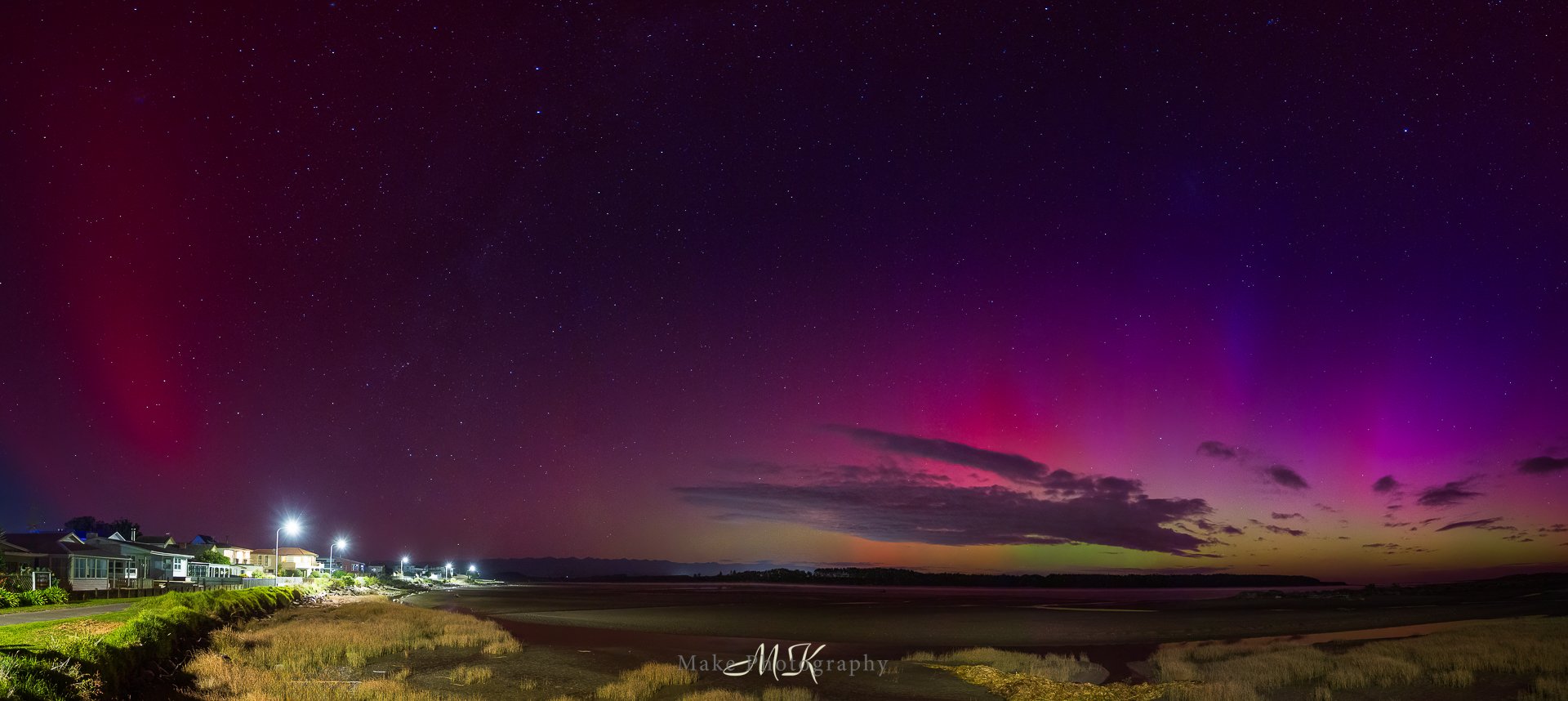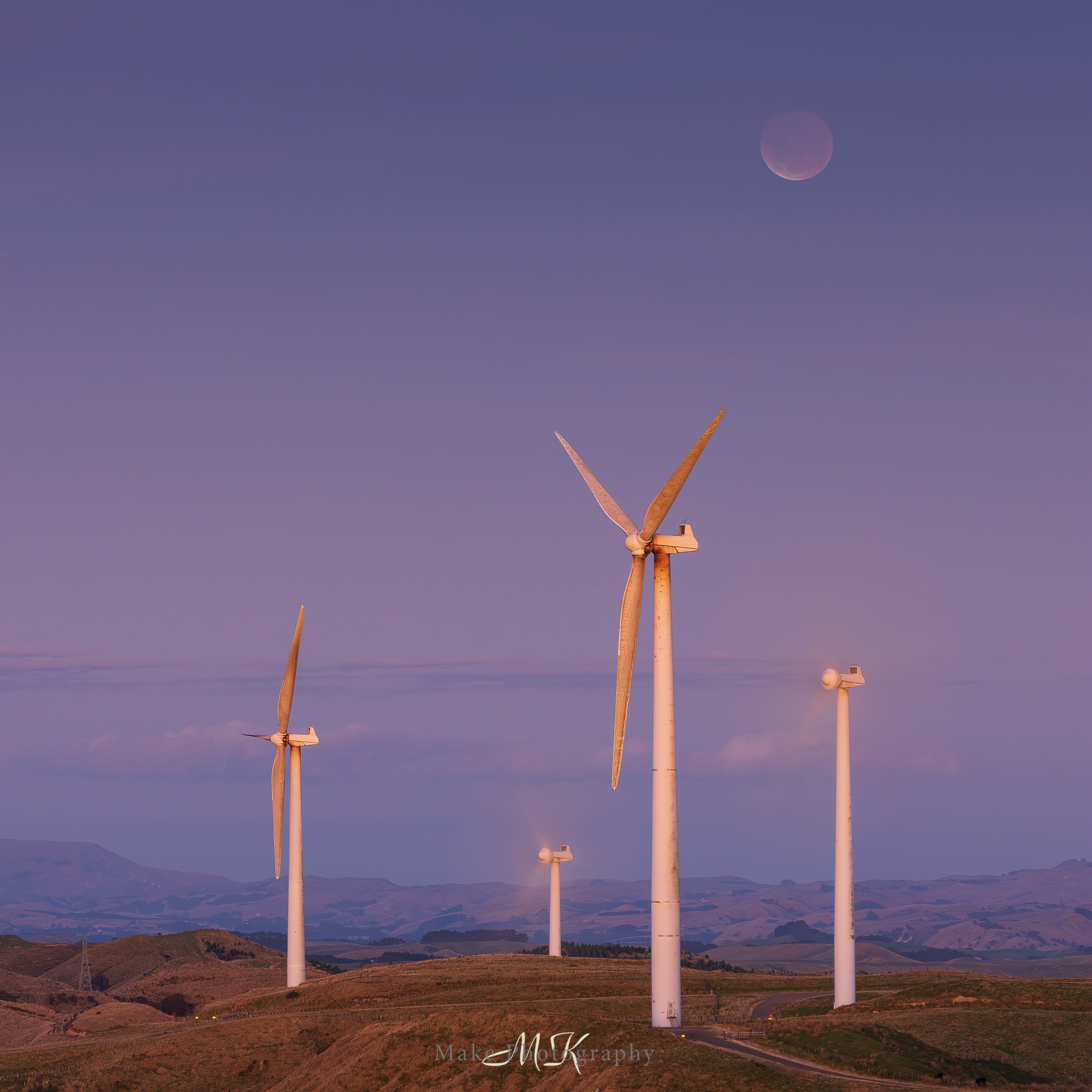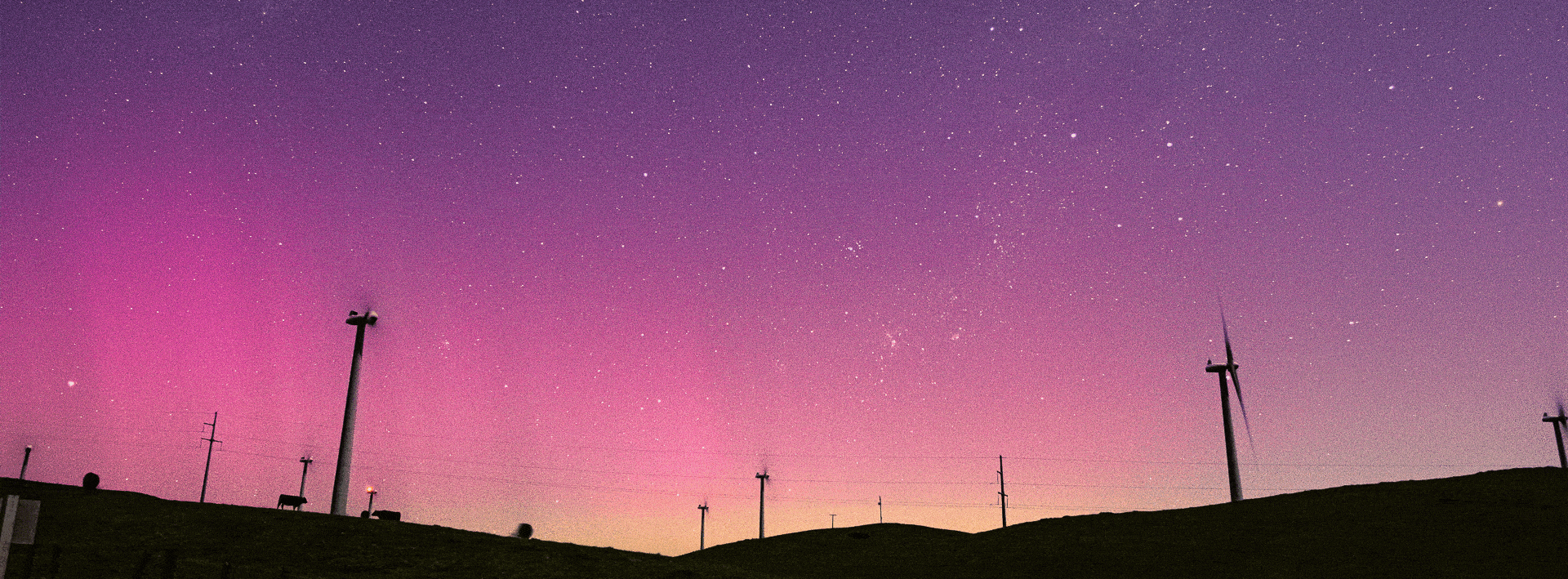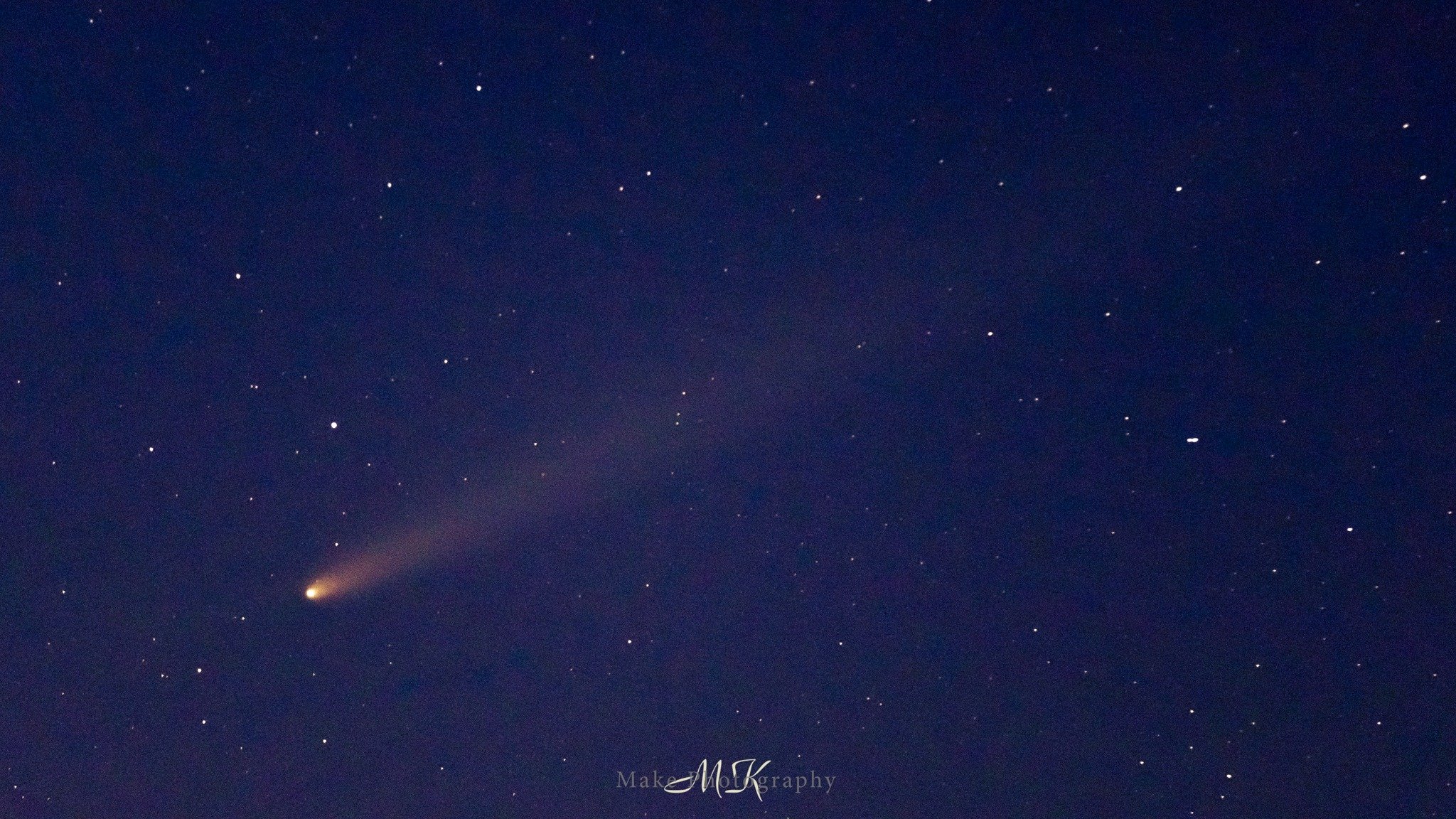Aurora Australis - May 11-2024
Aurora over the Manawatu Estuary - May 11 2024
There are times in your photographic life where the gear, the knowledge, don’t matter as much. Where the person with the cell phone next to you can get a similar shot. But then there are times when the research helps. Where technique matters and where local knowledge pays off. When combined, all of these together can make that once in a life time experience, even better.
SAR arc (a glowing, dim, wide band of red light that appears in the subauroral upper atmosphere. SAR arcs are caused by the interaction of the outer plasmasphere with the ring current's energetic ions)
May 11th caught a lot of people by surprise, and some even missed out on it all together. But I had been watching the developments over the previous three to four days. I had seen the reports of the original X class flares fire off, one after another. Followed the progress on web sites which were able to give predictions on the dates and timing. Then in the daylight hours of the 11th, saw the reports of the arrival of the waves of Coronal Mass Ejections (also known as CMEs - CMEs are large expulsions of plasma and magnetic field from the Sun's corona) as they began to interact with the earth. My only hope was that it would hold on for our night.
Aurora Australis over Himatangi Beach
We have all been there, when the forecasts don’t happen. Whether it’s a sunny day after a long rainy period or an aurora forecast. For that forecast to hold true, you still need an ounce of luck. The Manawatu is pretty much half way between the south pole and the equator, so we only see a fraction of the aurora storms that happen. They have to be exceptional, to even catch in a photograph. So it is fair to say that my expectations were low on the 11th, based on my previous attempts. I thought it would be something our cameras might show in colour, but to the naked eye it would look like soft weird clouds.
Could I have been more wrong. Even while driving with headlights on, the moment we got out of the city lights, a faint red band of light could be seen descending vertically over the Tararuas (what I found out later was a SAR arc). I was shocked. Arriving at Foxton beach, the beach carpark was almost full, people staring up at the sky. This was one of those moments where nature reminds us that we haven’t seen it all.
I captured a few images at the beach, watching the colours of the aurora dance, reflecting in the water left behind from the waves. But to be honest the beach was too busy, the images too obvious, this was a moment many would remember for the rest of their lives. It needed a location, something Manawatu, that would elevate the image. I guess that is what landscape photography teaches you, the subject is important but you need to think beyond that.
That’s when I thought about the estuary lookout, from there you can see the estuary, the Tararua range and the Manwatu river. Combined they would give a scale to the aurora, a location. The one thing I didn’t count on was the pathway lights, illuminating the houses along the estuary. But rather than a distraction or an obstacle, with a bit of forethought, I was able to include them in the image. The path lights outshone by the aurora to me adds the icing to the image, the ultimate hat tip to the power of this display. What a night!







